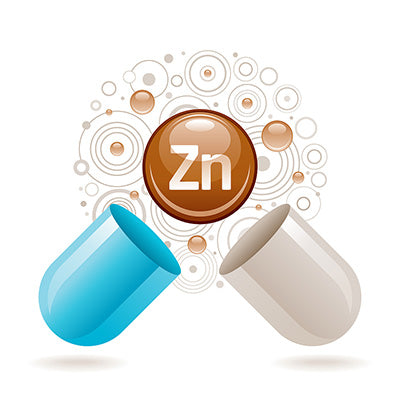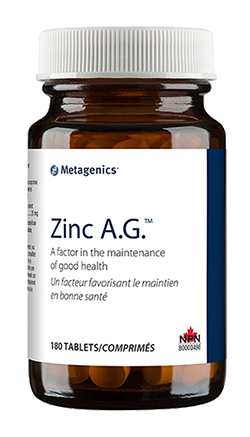Ionophores - Boost Your Immunity with Zinc and Quercetin

Recent research is focusing on the importance of dietary zinc combined with zinc ionophores which may improve cellular absorption and increase immune function.
Zinc is an essential mineral well-known as the single most important micronutrient for proper function of the human immune system. Zinc deficiency is associated with decreased testosterone, lower natural killer cell production (critical to immune response), and decreased thymulin activity (a hormone required to help T cells control the immune response).
Low levels of zinc can lead to hyperammonemia (excess ammonia in the blood that can cause brain injury and death), hypogeusia (reduced ability to taste), a decreased ability to see in darkness, and lower levels of interleukin-2 production. IL-2 is a protein that is essential for immune function, as it affects T cells. Also called t-lymphocytes, these white blood cells play an important role in the immune response, searching out and destroying invaders in the body. Finally, zinc functions as an antioxidant, helping to prevent free radicals that can cause cell damage from inflammation.
According to Bruce Ames, PhD, inadequate zinc causes oxidative damage to DNA and other enzymes involved in DNA repair. Even a mild zinc deficiency negatively affects biochemical, clinical, and immunological functions, and could lead to increased incidences of infection.
Ionophores & Polyphenols
An ionophore is a compound that can transport ions (like zinc) across biological cell membranes. Since zinc regulates adaptive immune cell function, these compounds can help maintain higher levels of intracellular zinc and decrease the replication of RNA viruses like influenza, SARS, and COVID-19.
Two ionophores that have been used to help increase cellular zinc levels in the treatment of some RNA viruses are chloroquine (a malarial drug discovered in 1934) and hydroxychloroquine. These compounds are related to quinine, which was originally derived from cinchona bark and first used to treat malaria. Popular in use with cocktails today, quinine is the component in tonic water that gives it a bitter taste.
Hydroxychloroquine is more commonly used to treat auto-immune diseases including rheumatoid arthritis and lupus. Both of these drugs can have adverse effects, as they can concentrate in melanin and affect skin and eye cells. There are also additional risks involved when used in combination with other pharmaceutical drugs.
Polyphenols are micronutrients, like vitamins and minerals, with powerful antioxidant properties. Polyphenols are abundant in a variety of plant foods including fruits, vegetables, herbs, spices, tea, dark chocolate, wine, and olives. Research has shown that polyphenols can help reduce the risk of neuro-generative diseases including mild cognitive impairment and Alzheimer's disease.
These important micronutrients may increase bone mineral density which lowers the risk of osteoporosis and can help improve the symptoms of arthritis. They also work to reduce insulin resistance and stabilizing blood sugar, which can reduce the risk of developing type 2 diabetes. One of the most important polyphenols is the flavonol quercetin.

Quercetin
A safe and natural anti-inflammatory and antioxidant, quercetin is the most frequently studied flavonoid. For dietary sources, it’s found in many plant foods including brassica vegetables (broccoli, cauliflower, and Brussels sprouts), capers, grapes, asparagus, green pepper, onions (red onions have the highest levels), shallots, wine, tomatoes, and tea.
Quercetin is also present in a wide variety of berries including strawberries, red raspberries, blueberries, black currants, cranberries, chokeberries, and Saskatoon berries. Black chokeberries (Aronia) have the fourth highest level of quercetin of 18 berries studied, at 348 mg/kg. Onions have the highest quercetin content among vegetables and fruits. Frying onions doesn't affect quercetin, but boiling lowers levels by about 30%, transferring the quercetin to the water.

One study from the University of California-Davis found that organic tomatoes have almost 80% higher levels of quercetin than non-organic. The highest concentration is found in raw capers, with the lowest being present in black or green tea. Quercetin can also be found in dietary supplements including Gingko biloba, St. John's wort, and black elderberry, a longstanding traditional remedy shown to reduce the symptoms and duration of influenza.
While working to reduce the risk of infection, quercetin may also help boost mental and physical performance. A powerful polyphenol with unique biological properties, the potential benefits include anti-carcinogenic, anti-viral, and anti-inflammatory activity. Studies have found that quercetin inhibited bladder cancer cells by inducing DNA damage, and influences long-term memory recall in patients with early-stage Alzheimer's disease. As nutritional support, it may help lower blood pressure, decrease blood glucose levels, inhibit the proliferation of human prostate cancer, and improve insulin sensitivity.
Studies from Appalachian State University showed that 1000 mg of quercetin per day significantly reduced upper respiratory tract infections, and additional research supports its ability to reduce the risk of rhinoviruses, adenoviruses, and coronaviruses.
One of quercetin's most well-known health benefits is for inhibiting histamine release. Its anti-inflammatory and immunomodulating properties may help reduce bronchial asthma, allergic rhinitis, and peanut-induced anaphylactic reactions. The Brazilian Journal of Pharmaceutical Sciences published a detailed study on quercetin and concluded that “quercetin demonstrates the potential to reduce the most significant pathologies of asthma,” and that “these results, in association with the low incidence of asthma in individuals with moderate dietary intake levels of quercetin, suggest that quercetin could be used medicinally, for the treatment of asthma.”
An open label study in Turkey led by Hasan Önal, MD is examining quercetin's potential use in the treatment and prevention of COVID-19. In the trial, 95 patients with COVID-19 are receiving 1000 mg quercetin, and 113 healthcare workers are receiving a 500 mg dose as a prophylactic. Both groups are also receiving bromelain and vitamin C.
Quercetin's antiviral properties have also been the focus of research by doctors Michel Chrétien and Majambu Mbikay at the Montreal Clinical Research Institute. They have similarly proposed using quercetin for treatment of COVID-19 and are also conducting clinical trials. While the results of the studies won't be known for several months, Chrétien and Mbikay are optimistic that quercetin may be able to play a role in treatment or prevention. “A cell has a lock, and the virus has a key,” Chrétien said, “but quercetin puts glue in the lock.”

In addition to all of these impressive supportive functions and applications, quercetin's most impressive quality may be its established zinc ionophore activity. As mentioned, an ionophore is a compound that can transport ions like zinc across cell membranes. As zinc regulates immune cell function, this may be able to decrease the replication of RNA viruses.
As quercetin and zinc are safe and time-tested dietary supplements, I believe they should be included as a part of everyone's nutritional supplementation program. I recommend 20 mg of zinc chelated with arginine and glycine (bisglycinate/arginate), with 250 mg of highly absorbable quercetin, taken twice daily. As dietary support, the combination has the potential to boost the body's natural ability to fight infection by strengthening the immune system.
Health Disclaimer. Copyright ©2020-2021. First published August 2020, last updated in July 2021. Nathan Zassman is a trained nutrition practitioner and the owner of Aviva Natural Health Solutions.
Related Reading: See N-Acetyl Cysteine and Ionic Zinc.
References
Bruce N. Ames - "Low micronutrient intake may accelerate the degenerative diseases of aging through allocation of scarce micronutrients by triage." - PNAS USA [PDF] - 2006 Nov 21.
Alyson E Mitchell et al. "Ten-year comparison of the influence of organic and conventional crop management practices on the content of flavonoids in tomatoes." - Department of Food Science and Technology and Department of Plant Sciences, University of California-Davis - J Agric Food Chem - 2007 Jun 23.
Li Ma et al. - "Growth inhibitory effects of quercetin on bladder cancer cell." - The Second Hospital of Lanzhou University (China) - Front Biosci - 2006 Sep 1.
Serena A. Heinz, et al. "Quercetin supplementation and upper respiratory tract infection: A randomized community clinical trial." Pharmacol Res. 2010 Sep.
Laila Rigolin Fortunato et al. - "Quercetin: a flavonoid with the potential to treat asthma." Braz. J. Pharm. Sci. - Dec 2012
Hasan Onal - "Effect of Quercetin on Prophylaxis and Treatment of COVID-19." Kanuni Sultan Suleyman Training and Research Hospital - February 2021
"Study of Isoquercetin (IQC-950AN) Plus Standard of Care Versus Standard of Care Only for the Treatment of COVID-19." Institut de Recherches Cliniques de Montreal - May 2021.
